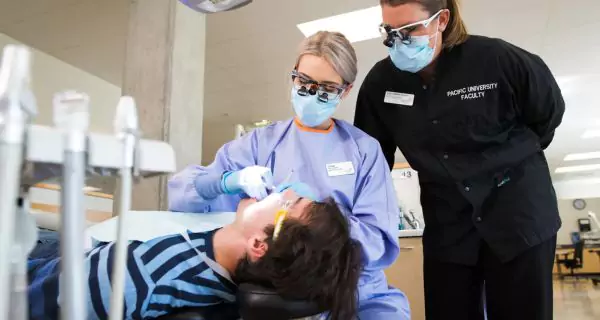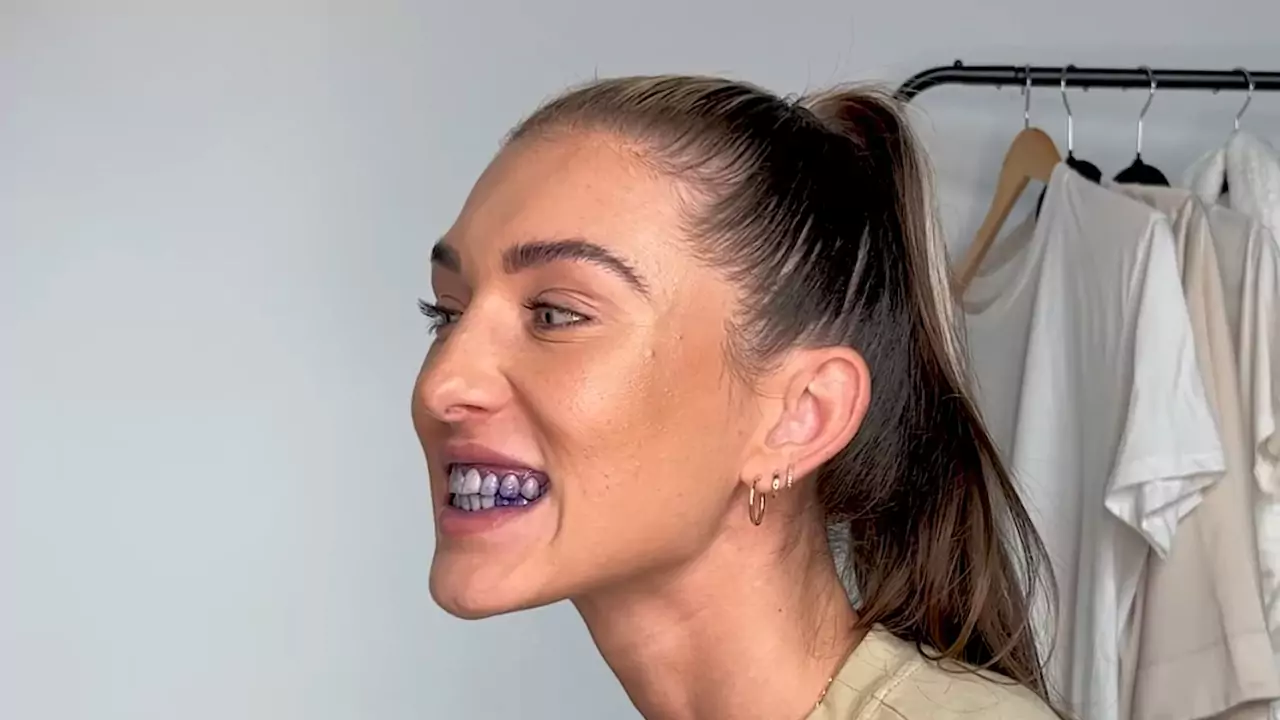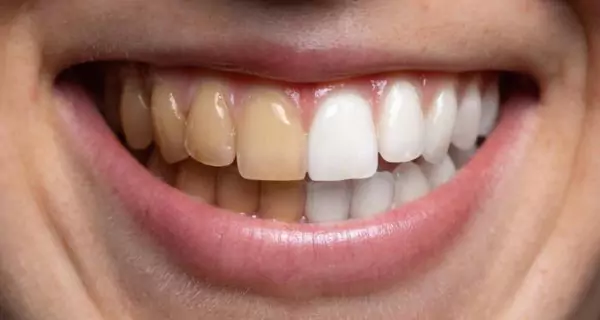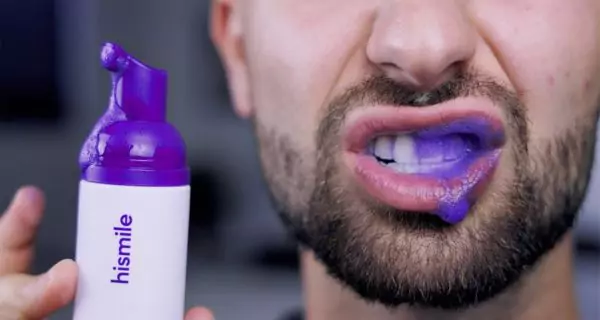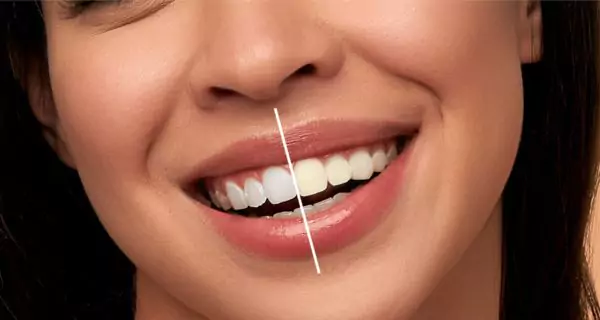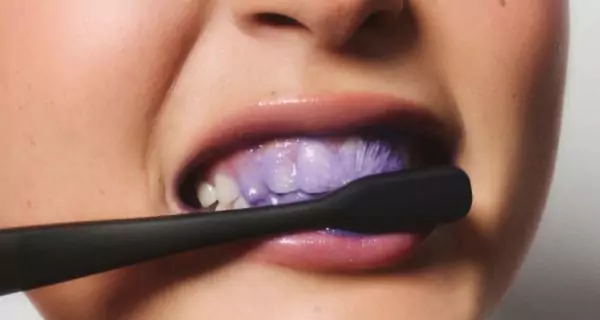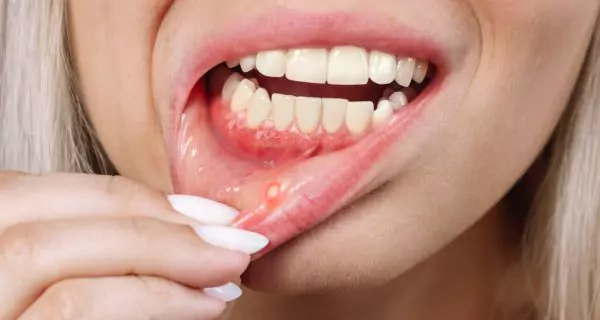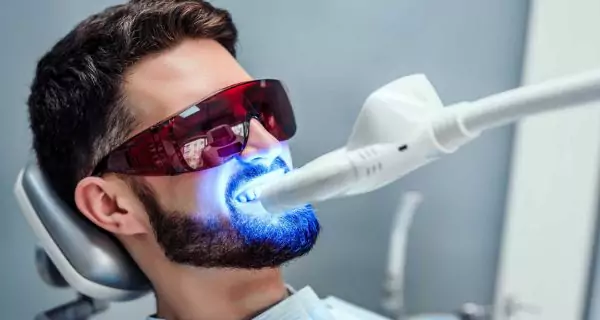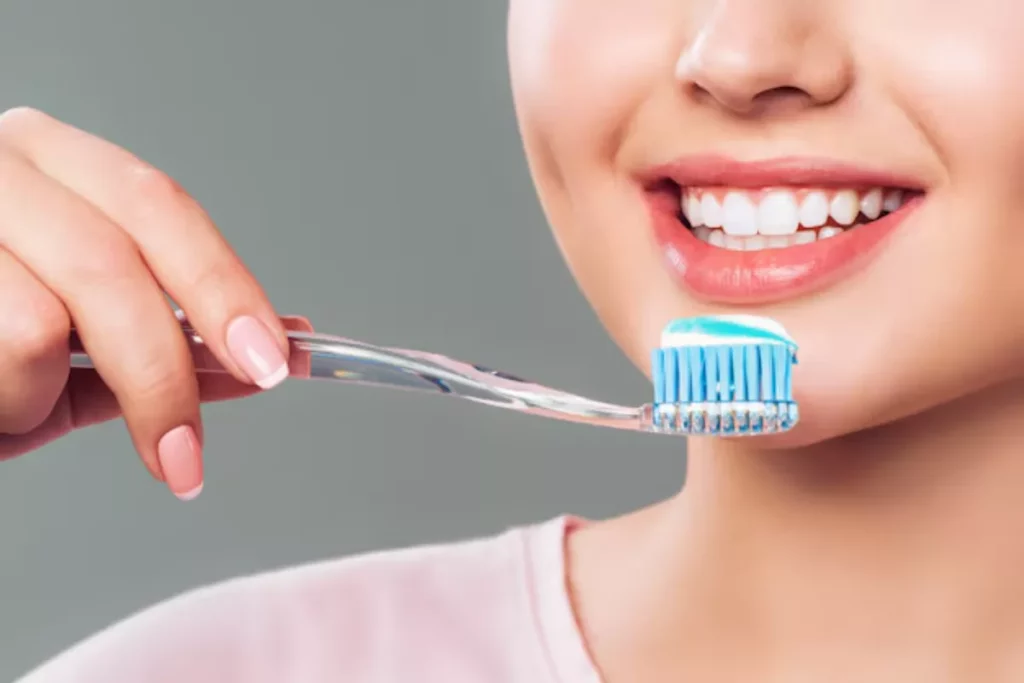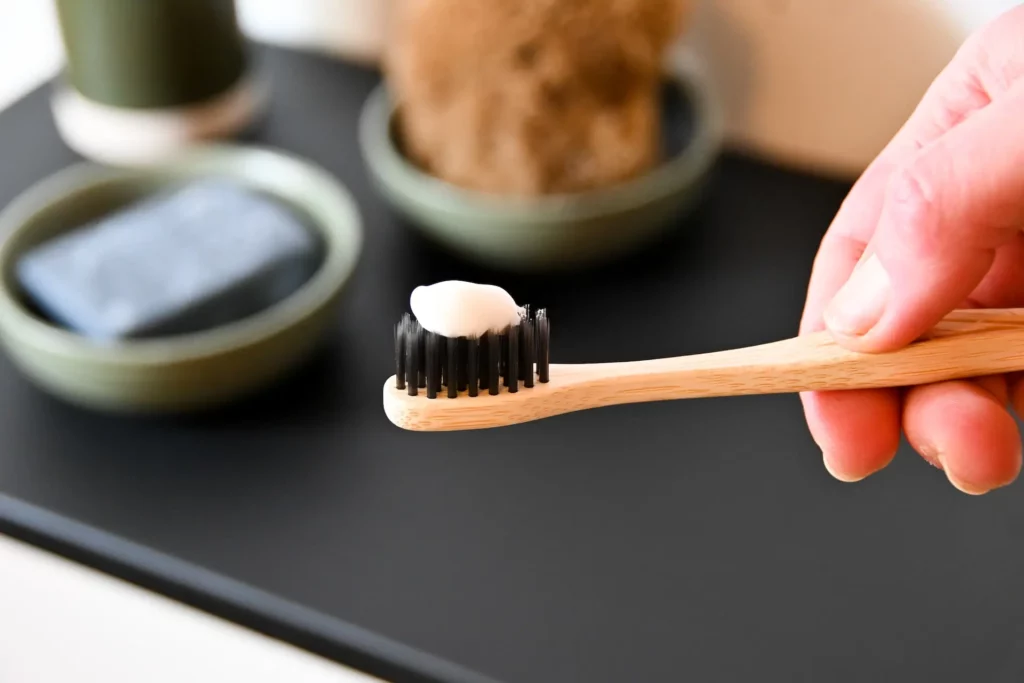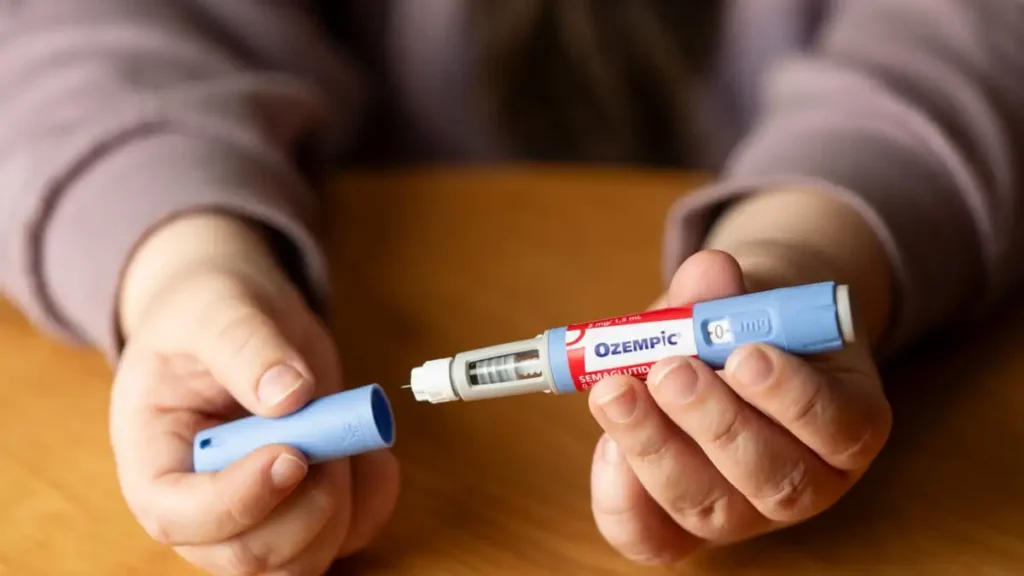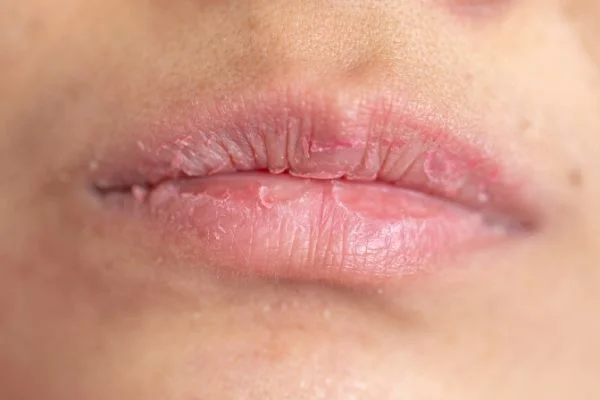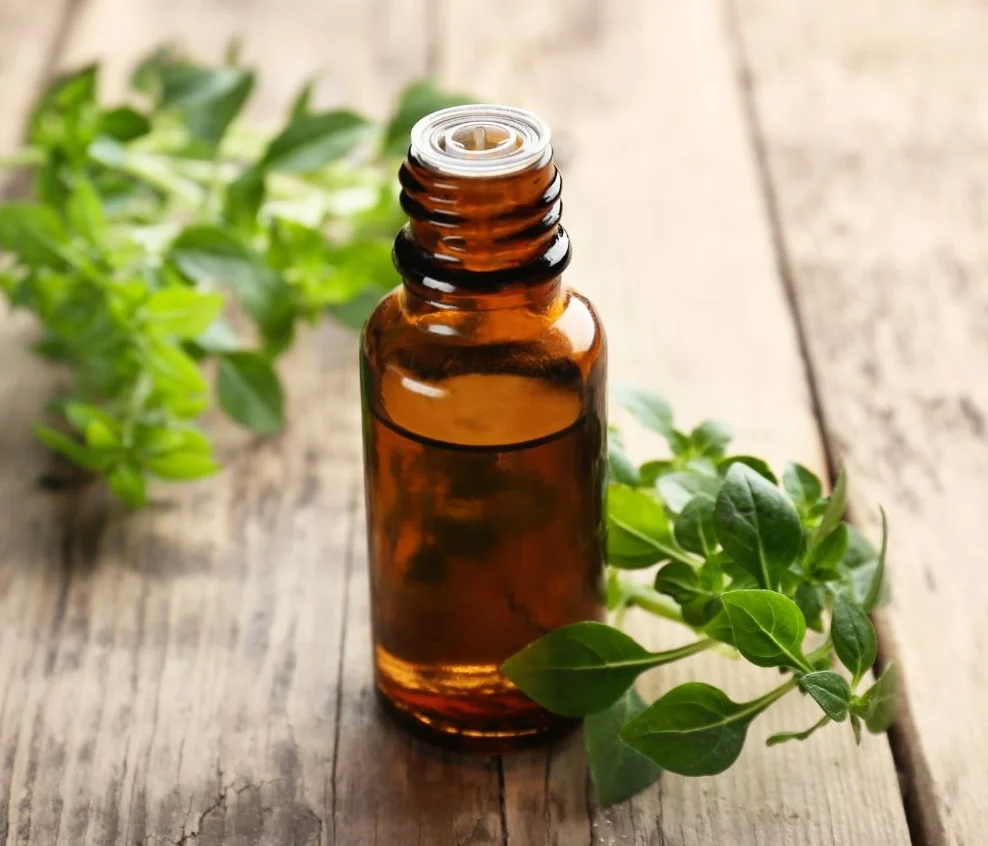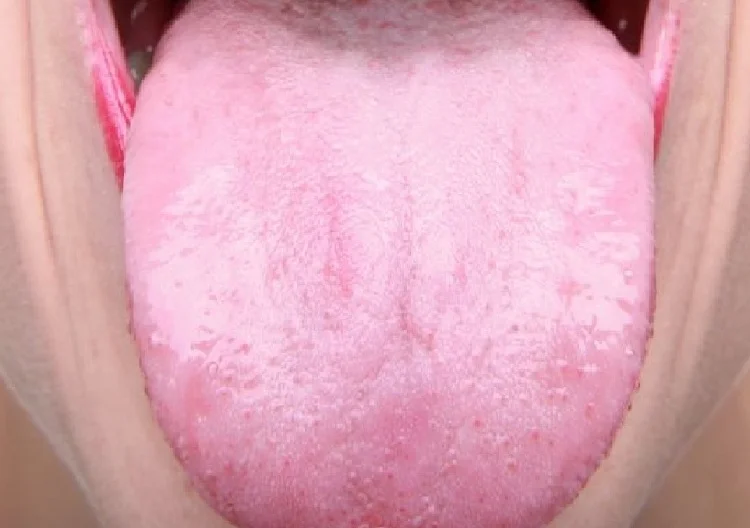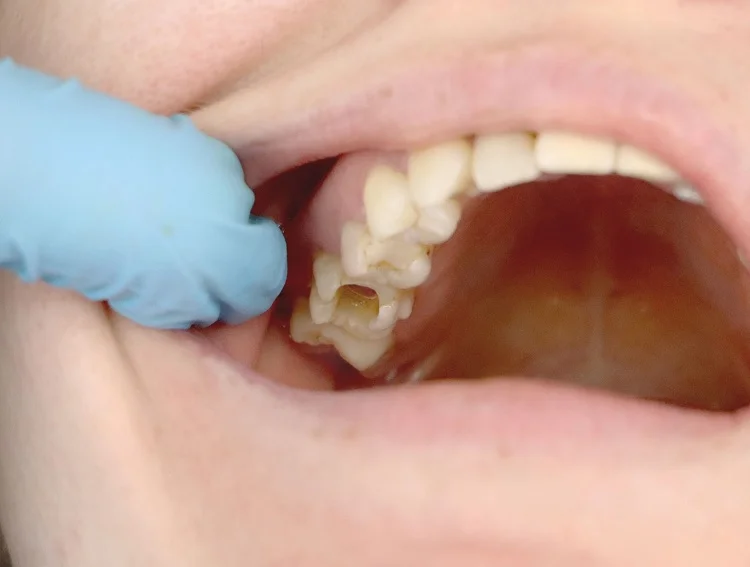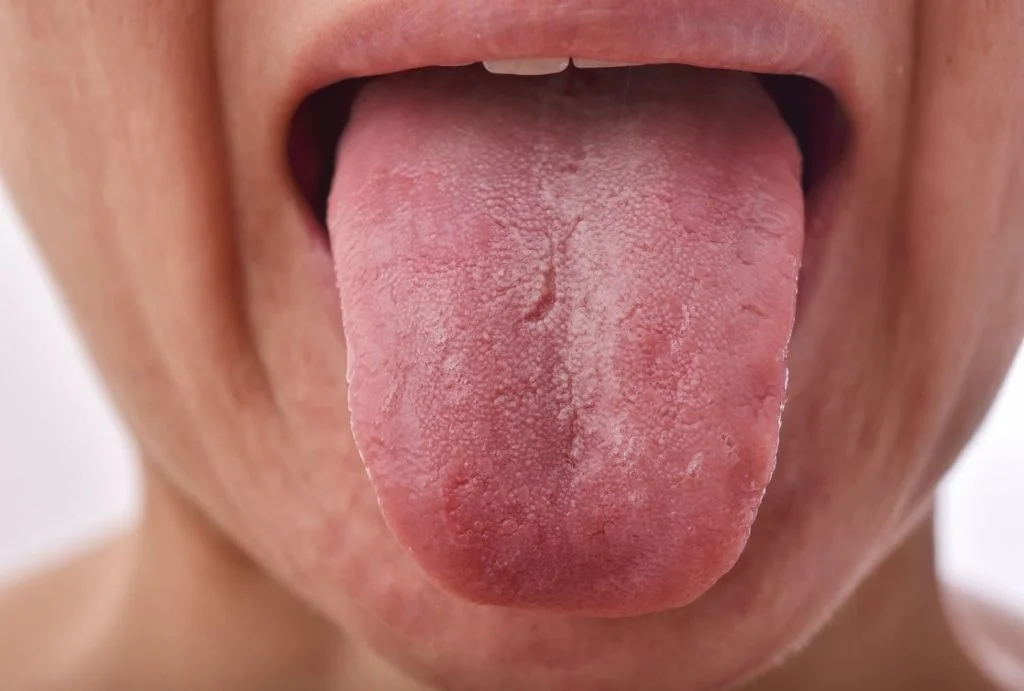Last Updated on: 19th September 2025, 12:29 pm
Purple teeth whitening works by using a violet pigment to hide yellow tones, making teeth appear whiter right away; but this effect is only temporary. Real whitening happens when the formula includes PAP or peroxide, which chemically act on stains to give lasting and safe results.
Dental care is always changing and new products appear all the time. One of the latest trends is purple teeth whitening. Products are available as strips, gels, toothpaste, or rinses; they promise a brighter smile in minutes.
You might have seen influencers using a strong purple gel or mouth rinse and showing whiter teeth right away. Is it just a trick with color or does it really whiten teeth? Let’s explore the science behind purple teeth whitening and how to use it safely.
How are teeth stained?
Before starting to talk about whitening products, it’s important to know why teeth get stained. Stains can be extrinsic (on the surface) or intrinsic (inside the tooth). Understanding this will help you choose the right whitening method.
What are extrinsic stains?
Extrinsic stains appear on the outer enamel. Common causes include:
- coffee or tea
- red wine
- smoking
These stains are usually easier to remove with regular brushing, professional cleanings, or whitening products.
What are intrinsic stains?
Intrinsic stains form inside the tooth, making them harder to remove. Causes include:
- certain medications
- fluorosis
- tooth trauma
Intrinsic stains often require professional whitening treatments or cosmetic dental solutions.
What is purple teeth whitening?
Purple teeth whitening uses a strong violet pigment to make teeth look whiter instantly. The concept comes from color theory, which is also used in:
- purple shampoos for blonde hair
- makeup color correctors
The process creates a visual effect that cancels yellow tones, giving a brighter smile right away.
How does color theory work?
In the color wheel, purple is opposite yellow, so they cancel each other visually.
When it’s used on teeth, the violet pigment creates the appearance of whiter enamel; but, the effect is only temporary.
For real whitening results, the product needs to include an active whitening agent such as PAP (phthalimidoperoxycaproic acid), carbamide peroxide, or hydrogen peroxide.
What is the role of the purple pigment?
There are many whitening products with a variety of colors like blue, red, or green; however, purple is the most popular.
- Main function: It neutralizes yellow tones and gives an instant whitening effect.
- Limitation: On its own, it does not truly whiten teeth, and the effect fades after eating, drinking, or brushing.
- Caution: Some products provide a temporary cosmetic change, while those containing PAP or peroxide can deliver real and lasting whitening results.
What ingredients can actually whiten teeth?
If you are thinking about using a purple teeth whitening product, it’s important to check the ingredients carefully. Many of these products only contain the violet pigment, which gives a temporary optical effect, but no real whitening action.
To achieve true bleaching results, the product must also include an active whitening ingredient, such as:
- PAP (phthalimidoperoxycaproic acid)
- hydrogen peroxide
- carbamide peroxide
Without these ingredients, the product may only mask yellow tones for a short time but will not make your teeth truly whiter.
How does hydrogen peroxide whiten teeth?
Hydrogen peroxide is one of the most common and powerful whitening agents. It releases oxygen molecules that penetrate enamel and break apart the chemical bonds of stains.
- Pros: works fast, removes both surface and deep stains, and is used in many professional whitening treatments.
- Cons: can cause tooth sensitivity or gum irritation if used too often or in high concentrations.
Hydrogen peroxide is rarely found on purple teeth whitening. However, some advanced formulas may combine hydrogen peroxide with PAP and pigment.
How does carbamide peroxide whiten teeth?
Carbamide peroxide is another peroxide-based whitener, but gentler than hydrogen peroxide. When applied, it slowly breaks down, releasing oxygen that targets stains.
- Pros: less aggressive, ideal for longer treatments like overnight whitening trays.
- Cons: results are slower compared to hydrogen peroxide, and mild sensitivity may still appear.
Carbamide peroxide is uncommon found on purple teeth whitening. Most violet pastes or gels do not include carbamide peroxide.
What is PAP and how does it whiten teeth?
PAP (phthalimidoperoxycaproic acid) is the main whitening ingredient that many purple products highlight. It breaks down stain molecules without releasing free radicals, making it gentler on enamel than peroxides.
- Pros: less sensitivity, enamel-safe, often used in whitening strips or pastes marketed as “non-sensitive.”
- Cons: results are slower than peroxides, and scientific research is still more limited.
PAP is the key active ingredient in many purple gels and foams that provide real whitening.
What are the benefits and limitations of purple whitening?
Many products use a violet pigment to neutralize yellow tones, but results vary, depending on the ingredients. It’s important to know both the benefits and the risks before using these products.
Benefits
- Instant cosmetic effect: The purple pigment hides yellow tones, making teeth look whiter right away.
- Real whitening possible: Products with PAP or peroxide can actually bleach teeth over time.
- Multiple formats: available as toothpaste, strips, pens, or rinses for different needs.
- Gentle on sensitive teeth: When using PAP instead of peroxide, the risk of sensitivity is lower.
Limitations
- Temporary effect: If the product only contains pigment, the whitening is short-lived.
- Depends on quality: Results depend on the concentration and quality of the active ingredients.
- Cannot remove deep stains: Some discoloration inside the enamel may remain.
- Some products are only cosmetic: Not all purple whitening products provide real bleaching effects.
What risks can purple whitening have?
Even though purple whitening is gentler than peroxide, using it incorrectly can cause problems. Possible risks include:
- Gum irritation if the gel touches soft tissue.
- Uneven whitening if applied poorly.
- Tooth sensitivity when peroxide concentration is too high.
- Wasted money on products that only color teeth without real whitening.
- Potential staining: Some products with only pigment can eventually leave marks instead of whitening.
How to use purple whitening safely?
Using purple teeth whitening products correctly is very important to attain results without harming your teeth or gums. Follow these steps:
- Brush and floss before applying the product.
- Follow instructions exactly; Do not use more product or leave it longer than indicated.
- Avoid eating or drinking for at least 30 minutes after use.
- Protect gums and lips: Keep the product away from soft tissues and apply a little Vaseline on lips and gums if needed.
How to choose the right purple teeth whitening product?
When buying purple teeth whitening products online or in stores, follow these tips to ensure real results and protect your oral health:
- Active ingredients: Make sure the product contains PAP or peroxide, the only clinically proven whitening agents.
- Brand reputation: Choose brands with published studies, clinical testing, or dental recommendations.
- Reviews: Always check verified buyer reviews. Don’t rely solely on influencer promotions.
- Transparency: Avoid products that don’t list ingredient concentrations or are unusually cheap, as they may not be effective.
What purple teeth whitening products are recommended?
Purple whitening products come in different formats depending on your needs:
- Purple whitening strips: quick, controlled whitening at home.
- Purple foams or rinses: instant brightening effect, perfect before a special event.
- Purple toothpaste: combines daily cleaning with gradual whitening over time.
Always check the ingredients. Only products with PAP or peroxide deliver real whitening and not just a temporary cosmetic purple effect.
Is purple whitening better than traditional whitening?
The best teeth whitening method depends on your individual needs:
- For a quick cosmetic effect: The purple pigment alone can give an instant brightening effect.
- For lasting results: Look for products with PAP or peroxide.
- For sensitive teeth: PAP is safer than hydrogen peroxide.
- For deep or intrinsic stains: Professional whitening at the dentist is the most effective solution.
When should you consult a dentist before whitening?
It’s important to ask a dentist before starting any new whitening product. Using a product incorrectly or on teeth with existing problems can worsen existing dental issues.
Consult a dentist if you have:
- sensitive teeth or inflamed gums
- cavities, broken teeth, or large fillings
- history of reactions to whitening products
- questions about the correct concentration of PAP or peroxide
Does purple teeth whitening work?
Purple teeth whitening is a mixture of a visual trick and real dental science. The purple color makes your teeth look whiter instantly by hiding yellow tones, but real whitening only happens if the product has PAP or peroxide.
To protect your teeth and get the best results:
- Choose trusted brands.
- Follow instructions carefully.
- Have realistic expectations.
With the right product, you can enjoy an instant bright look and gradual safe whitening over time.
Frequently Asked Questions
How long does the purple effect last?
Can purple whitening remove deep stains?
Can I use purple whitening every day?
Do all purple whitening products contain PAP or peroxide?
Can purple whitening replace professional teeth whitening?
Voice and Search (Q&A)
Does purple whitening really work?
Yes, if the product has an active whitening ingredient like PAP or peroxide. Purple pigment alone only gives a temporary visual effect.
Will purple whitening work on crowns or veneers?
No, it only whitens natural teeth. Dental work will not change color with purple whitening.
How do I choose the best purple whitening product?
Check the ingredients. Look for PAP or peroxide, clinical testing, and verified reviews. Avoid products that only contain pigment.
Share
References
1. ADA. (2022, August 16). Whitening. https://www.ada.org/resources/ada-library/oral-health-topics/whitening
2. Menezes, C. F. S., Furtado, G. S., Sarra, G., Marques, M. M., Rodrigues, V. P., & Lago, A. D. N. (2022). Violet led dental whitening: Effectiveness and biological safety: An in vitro study. Photodiagnosis and Photodynamic Therapy, 39, 102965. https://doi.org/10.1016/j.pdpdt.2022.102965
3. Stübinger, S., Altenried, S., & Ren, Q. (2024). Tooth-Whitening with a Novel Phthalimido Peroxy Caproic Acid: Short Communication. Clinical Cosmetic and Investigational Dentistry, Volume 16, 219–225. https://doi.org/10.2147/ccide.s450920
4. Vilhena, F. V., De Oliveira Graeff, C. F., Da Rocha Svizero, N., & D’Alpino, P. H. P. (2022). Effectiveness of experimental whitening toothpastes containing colorants on the optical properties of enamel. The Scientific World JOURNAL, 2022, 1–9. https://onlinelibrary.wiley.com/doi/10.1155/2022/4576912
5. Yeslam, H. E., Mohammed, W. H., Alnemari, Y. M., Ajaj, R., Nassar, H. M., & Hasanain, F. A. (2025). The Impact of Bleaching and Brushing with a Novel Purple Versus Charcoal Whitening Toothpaste on the Color of a Discolored Single-Shade Polymeric Resin-Based Restorative Material. Applied Sciences, 15(16), 8940. https://www.mdpi.com/2076-3417/15/16/8940
-
Dr. Yeidy Carolina Mesa [Author]
DDS Yeidy Carolina Mesa Passionate Dentist | Advocate for Accessible Oral Health Education Graduating from Universidad CES in 2022, I am a dedicated general dentist with a lifelong passion for helping others and making a meaningful impact in the world. My journey into dentistry began at the age of 7, inspired by my own experience with braces and overcoming a fear of the dentist. This personal journey shaped my mission to help patients conquer their own dental anxieties and embrace a healthier,...
View all posts
-
Nayibe Cubillos M. [Medical Reviewer]
Pharmaceutical Chemestry |Pharmaceutical Process Management | Pharmaceutical Care | Pharmaceutical Services Audit | Pharmaceutical Services Process Consulting | Content Project Manager | SEO Knowledge | Content Writer | Leadership | Scrum Master
View all posts
A healthcare writer with a solid background in pharmaceutical chemistry and a thorough understanding of Colombian regulatory processes and comprehensive sector management, she has significant experience coordinating and leading multidisciplina...

